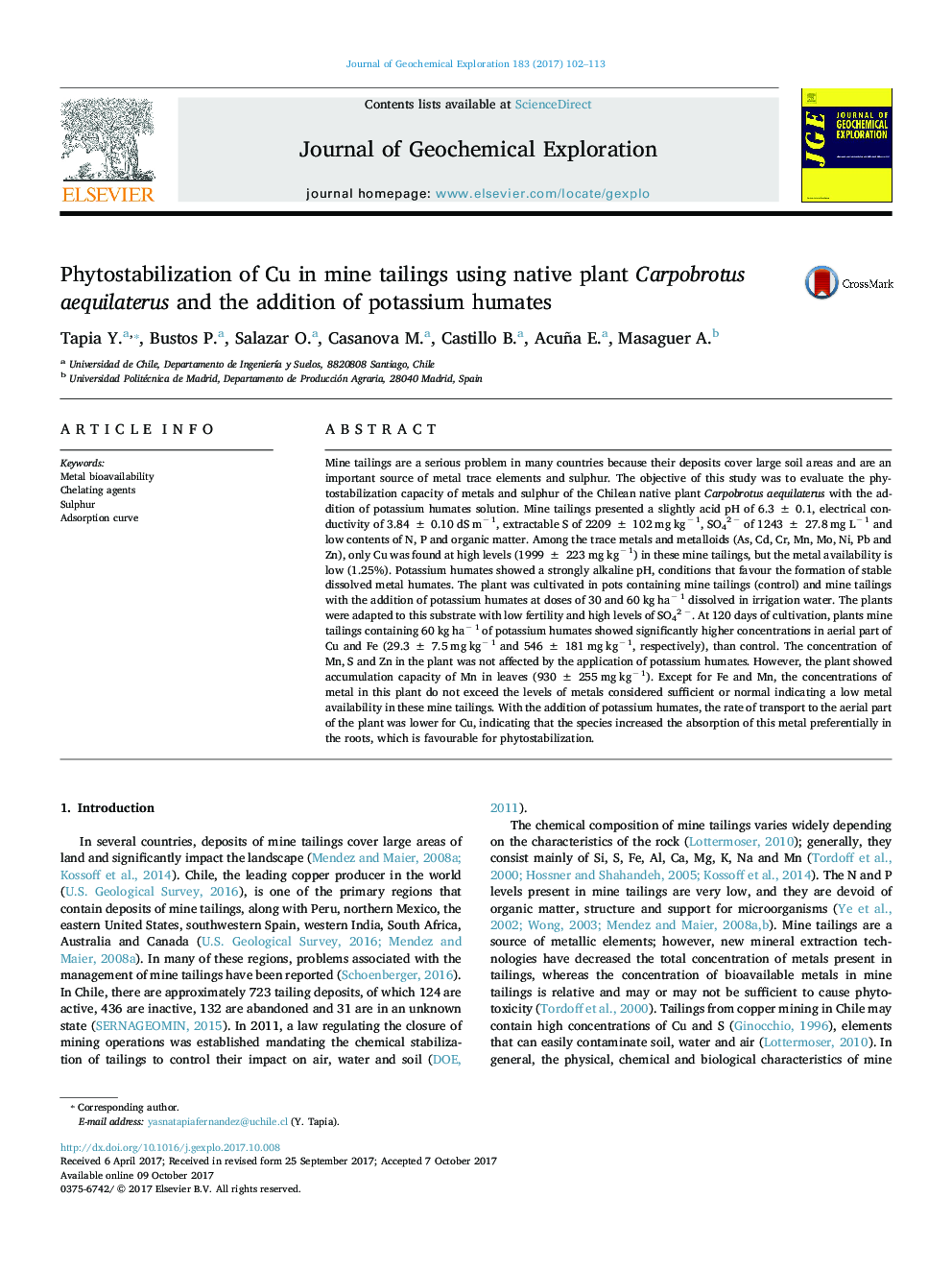| Article ID | Journal | Published Year | Pages | File Type |
|---|---|---|---|---|
| 5754443 | Journal of Geochemical Exploration | 2017 | 12 Pages |
Abstract
Mine tailings are a serious problem in many countries because their deposits cover large soil areas and are an important source of metal trace elements and sulphur. The objective of this study was to evaluate the phytostabilization capacity of metals and sulphur of the Chilean native plant Carpobrotus aequilaterus with the addition of potassium humates solution. Mine tailings presented a slightly acid pH of 6.3 ± 0.1, electrical conductivity of 3.84 ± 0.10 dS mâ 1, extractable S of 2209 ± 102 mg kgâ 1, SO42 â of 1243 ± 27.8 mg Lâ 1 and low contents of N, P and organic matter. Among the trace metals and metalloids (As, Cd, Cr, Mn, Mo, Ni, Pb and Zn), only Cu was found at high levels (1999 ± 223 mg kgâ 1) in these mine tailings, but the metal availability is low (1.25%). Potassium humates showed a strongly alkaline pH, conditions that favour the formation of stable dissolved metal humates. The plant was cultivated in pots containing mine tailings (control) and mine tailings with the addition of potassium humates at doses of 30 and 60 kg haâ 1 dissolved in irrigation water. The plants were adapted to this substrate with low fertility and high levels of SO42 â. At 120 days of cultivation, plants mine tailings containing 60 kg haâ 1 of potassium humates showed significantly higher concentrations in aerial part of Cu and Fe (29.3 ± 7.5 mg kgâ 1 and 546 ± 181 mg kgâ 1, respectively), than control. The concentration of Mn, S and Zn in the plant was not affected by the application of potassium humates. However, the plant showed accumulation capacity of Mn in leaves (930 ± 255 mg kgâ 1). Except for Fe and Mn, the concentrations of metal in this plant do not exceed the levels of metals considered sufficient or normal indicating a low metal availability in these mine tailings. With the addition of potassium humates, the rate of transport to the aerial part of the plant was lower for Cu, indicating that the species increased the absorption of this metal preferentially in the roots, which is favourable for phytostabilization.
Related Topics
Physical Sciences and Engineering
Earth and Planetary Sciences
Economic Geology
Authors
Tapia Y., Bustos P., Salazar O., Casanova M., Castillo B., Acuña E., Masaguer A.,
